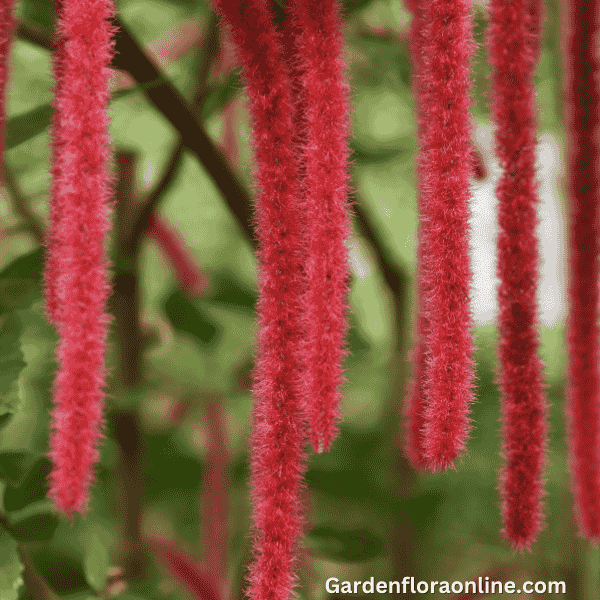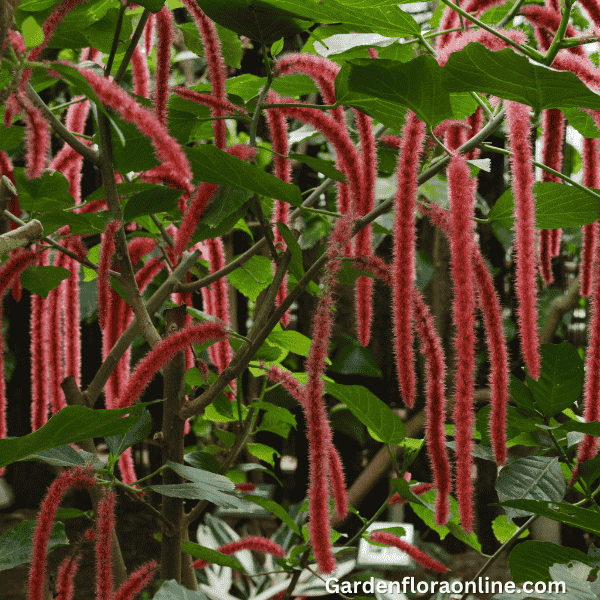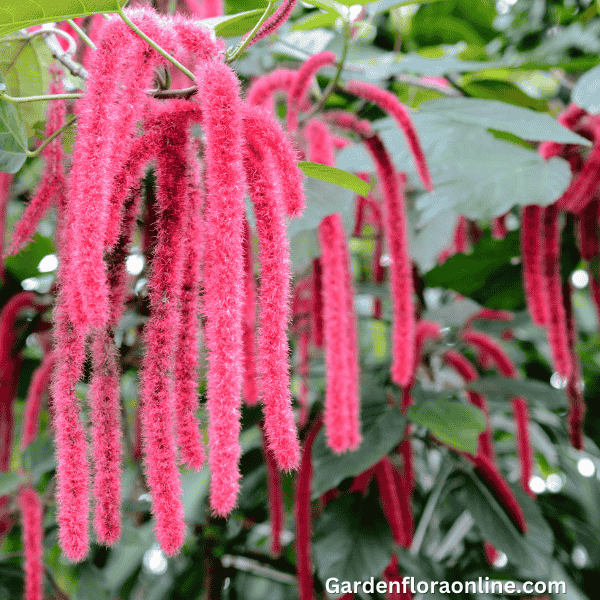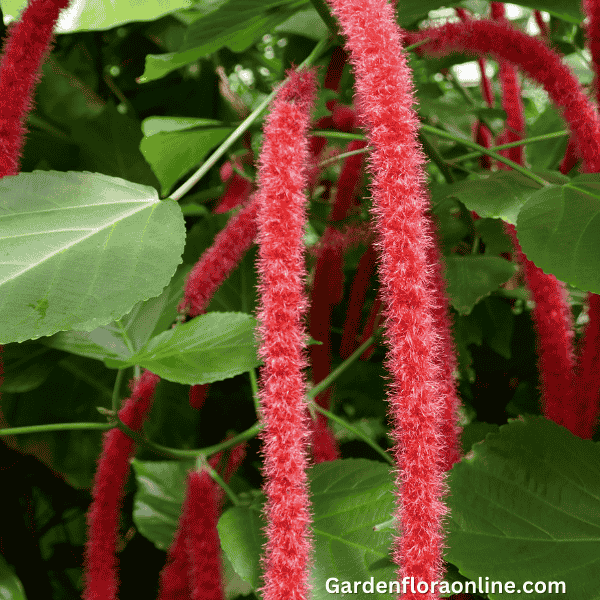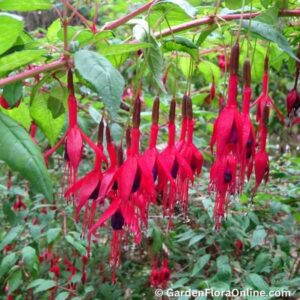A much-branched dioecious shrub, growing up to 2 m tall. Leaves broadly ovate or rhombic-ovate, up to 20 × 15 cm, margins serrate, apex acuminate, base rounded or cuneate. Femal inflorescence spicate, axillary, solitary, up to 30 cm long, densely flowered, bright red; flowers sessile, ovary 3-lobed, ca. 1 mm in diam., styles 5-7 mm long, free.
Cultivation: Prefers full sun to partial shade, in well-drained, moist fertile organic soils; pinching or pruning may be necessary to encourage branching; no serious pests or diseases reported. Usually propagated through cuttings.
Etymology: The genus name “Acalypha” is derived from the Greek word “akalephe,” which means “nettle.” This is because some species in this genus have leaves that resemble those of a nettle plant. The specific epithet “hispida” is derived from the Latin word “hispida,” which means “bristly” or “hairy.” This likely refers to the plant’s characteristic hairy or bristly texture.

